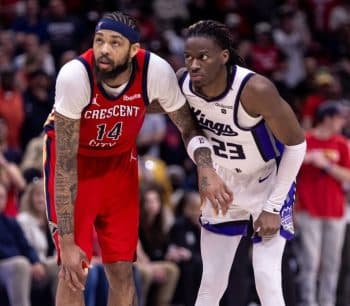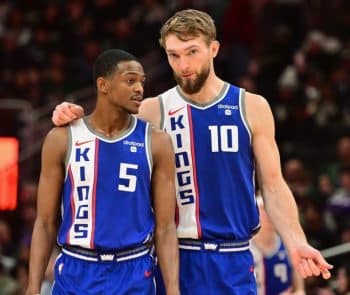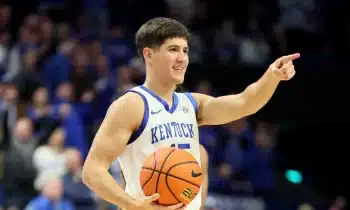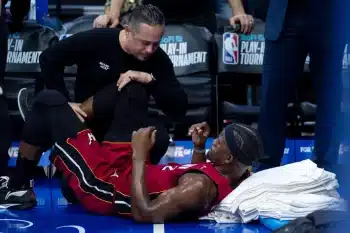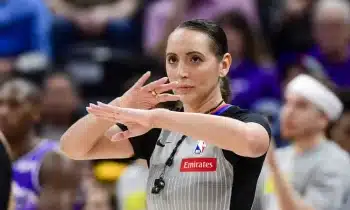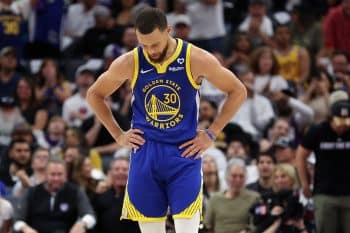NBA
NBA Early Returns: What is Sustainable?

“It’s too early to take anything seriously.”
Some variation of that statement makes the rounds on various social media platforms roughly 500 times a day for the first couple weeks of a given NBA season. Similar discourses tend to ensue surrounding events like NBA Summer League and the preseason.
The sentiments aren’t without merit in many areas, of course, particularly for offseason play. For one, sample sizes for most useful statistics are unsustainably small; it’s tough to get excited about a guy shooting 50 percent from deep if he’s only taken eight attempts. It also takes time for elements of the game to stabilize beyond statistics: things like rotations, players getting into full game shape and chemistry between new teammates.
With all of that said, the idea that nothing can be learned early in a new season is misplaced. These games still count toward teams’ eventual 82-game total, after all. We have enough information at our disposal these days to examine the game at enough of a granular level to make samples legitimate, aided in large part by SportVU data that can break a single game down into hundreds of distinct data points. More than anything, those of us with experience aren’t remiss in trusting our ability to separate the legitimate from the unsustainable.
Let’s apply these themes to two early trends, one good and one bad, from what’s been a fantastically entertaining first week of NBA basketball.
Karl-Anthony Towns’ Production
Small sample, huge sample, no sample whatsoever – no one will argue that Towns has gigantic superstar potential in this league. Somehow, though, his early performance might be stoking the fire even more than his meteoric rise up draft boards to among the league’s highest-ceiling blue chip prospects.
The numbers for Towns through three games are mind-blowing for a 19-year-old. He’s putting up 20 points, 12 rebounds and over three blocks per-36-minutes, all on over 50 percent shooting from the field despite attempting nearly 15 shots per-36. Opponents are shooting just 37.9 percent at the rim when Towns is there defending it, the sixth-lowest figure among rotation players defending at least seven shots per game, per SportVU figures.
While “sustainability” isn’t necessarily a huge concern with Towns – he’s likely going to be great, and no one doubts it – the level to which a few good games has raised his ceiling has become a frequent topic of conversation. Is this a kid we should be placing in the company of guys like Anthony Davis and Kevin Durant when they were his age?
It’s impossible to say for sure, but here’s what has some leaning more and more toward a yes: Towns doesn’t even really look like he has much clue what’s going on out on the NBA floor just yet. He’s a very smart kid by all accounts, but it simply takes time for many players, especially young bigs, to pick up the finer points of the professional game at full speed. Towns has long periods where he’s wandering around the court as if lost, standing in the wrong places and clogging things up on one end or the other.
And guess what? It hasn’t mattered. Towns has dominated bona fine NBA big men physically to the degree that his greenness mentally hasn’t come close to slowing him down. So what happens when he starts picking up the minutiae of the game? Given his smarts and the company of greats like Kevin Garnett in the locker room, who’s betting against this happening sooner rather than later? To this eye, comparisons to some of the most highly-touted prospects in recent memory are fair – even if they might be premature.
Teams Who’ve Played the Warriors Struggling
News flash: The Golden State Warriors are still really good at basketball. They’ve amassed an NBA-record 100-point positive differential in their first four games, each of which has come against a team that made the Western Conference playoffs last year. They’ve yet to be remotely challenged and Stephen Curry is making his case for a repeat MVP trophy.
No matter how good they’ve been, though, there’s a natural inclination from folks to see the scores they’re hanging on supposedly good teams and assume that said teams might not actually be as good as we thought. It’s tough to watch anyone in the NBA lose by 50 points and assume nothing’s wrong, regardless of the opponent.
Is this fair, though? Well… sometimes. Let’s take a case-by-case look at their three victims thus far.
In the case of the New Orleans Pelicans, who have now been destroyed by the Warriors twice and also beaten by nearly 20 in Portland on the way to an 0-5 start, the answer is yes – but for reasons we were already well aware of heading into the season. A somewhat ridiculous rash of injuries throughout the preseason and summer at large had smart observers wondering whether this group would have the depth and NBA-level talent to hang on early in the year, especially with the Warriors and several other top teams on the schedule early on. Even Anthony Davis isn’t enough by himself. These concerns are real, but two ugly losses to far and away the best team in the league haven’t really changed what we already knew coming in.
The Houston Rockets and Memphis Grizzlies are different cases. Houston finally left the ranks of the winless with a nice victory over the Oklahoma City Thunder on Monday night, but looked ugly in 20-point losses to the Denver Nuggets (to open the season) and the Miami HEAT (a game they led by 15 in the second half). James Harden was shooting in the mid-teens from three-point range before Monday night’s game, Ty Lawson has looked totally out of place and the supporting cast is nowhere to be found. A lot can and should change when Harden finds his form, but he’s back to his lackluster ways defensively on many occasions and the Rockets have real concerns if he can’t at least come close to his 2014-15 level.
The question for the Grizzlies early on is this: How can they improve their offense? A team that’s had shooting issues for years did nothing to address them once again this summer, and the results are showing early. Memphis as a team is shooting just 25.7 percent on open threes this season (per NBASavant), which ranks 27th in the league. While the sample is small, this trend is a carryover from last season when they finished 24th in this same category – and were 28th in total attempts, often an indicator of how much spacing a team is creating. The Grizz will always be one of the league’s toughest and best teams defensively, but in this Western Conference, their offense is threatening to dip to untenable levels.
For more talk about early-season observations, check out the latest episode of the Basketball Insiders Podcast featuring Alex Kennedy and Ben Dowsett:
